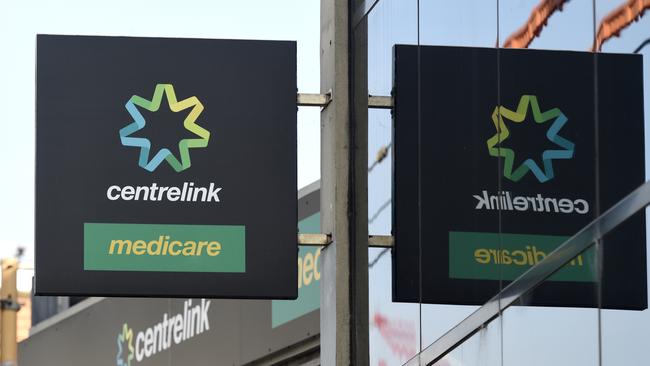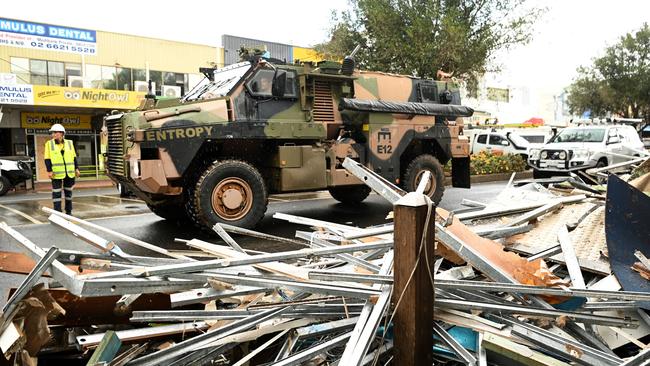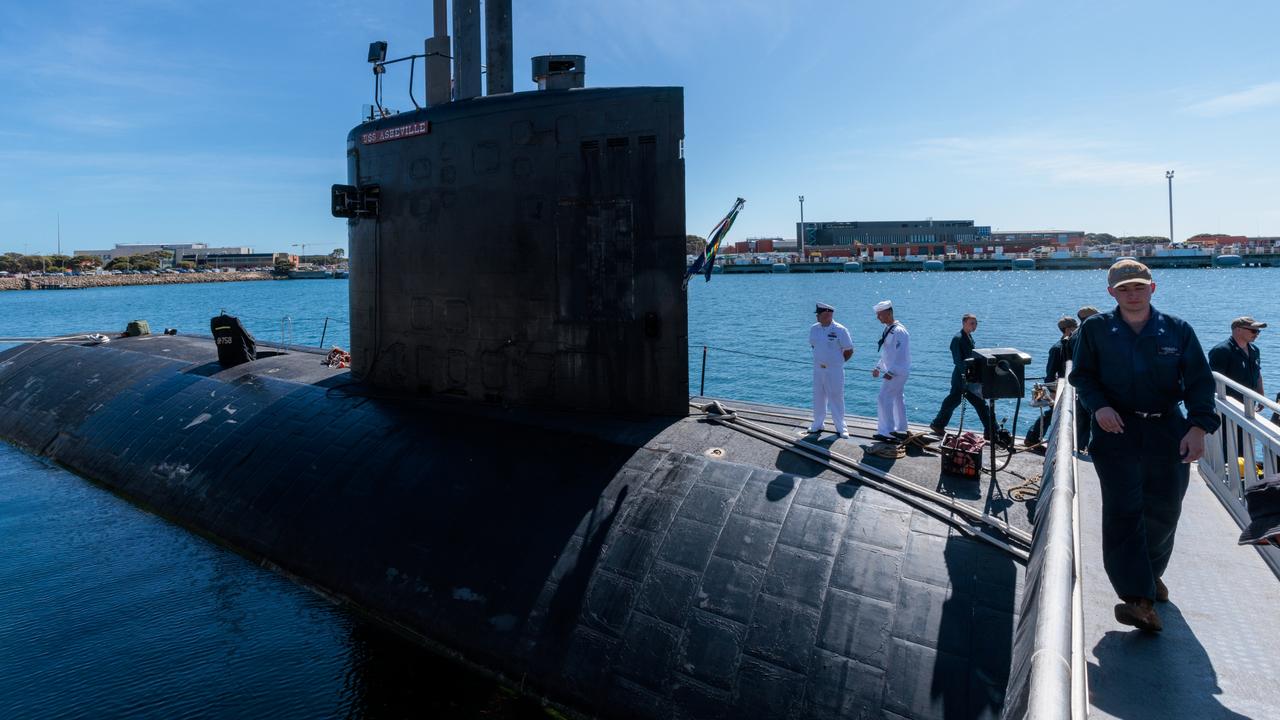Federal Budget 2022: When Australians will receive the $250 cost-of-living cash payment
Millions of Australians struggling with the rising cost of living are eligible for a one-off cash payment. Here is when it will start hitting bank accounts.
Millions of Australians struggling with the soaring cost of living will begin receiving the first of two significant cost-of-living payments within weeks.
More than six million people will be eligible for the one-off $250 cash payment, which was a key measure in last Tuesday’s Federal Budget by the Morrison Government.
Those eligible for the cash splash include pensioners, carers, veterans, job seekers, eligible self-funded retirees and concession card holders.

WHO IS ELIGIBLE?
Around six million eligible welfare recipients will receive a one-off cash handout to ease the rising cost of living pressures.
The $250 tax-free payment will be paid automatically the eligible Australians in April.
However, Australians eligible under two or more categories will only receive one payment.
Those eligible for the payment eligible include:
• Age Pension
• Disability Support Pension
• Parenting Payment
• Carer Payment
• Carer Allowance
• Jobseeker Payment
• Youth Allowance
• Austudy and Abstudy Living Allowance
• Double Orphan Pension
• Special Benefit
• Farm Household Allowance
• Pensioner Concession Card holders
• Commonwealth Seniors Health Card holders
• Eligible Veterans’ Affairs payment recipients and Veteran Gold card holders.
WHEN WILL I RECEIVE THE PAYMENT?
The budget said the payment would be rolled out sometime this month - with Services Australia now saying the first payments will be made on April 28.
However, it adds that date is subject to legislation.
Eligible Australians do not need to apply, it added, saying that the payments would be issued automatically.
Here is the full list of other support payments and grants available
The cost-of-living payment is one of two keystone measures unveiled in the federal budget — the other being a tax offset for low and middle income earners.
From July 1 this year, more than 10 million individuals will also receive a one-off $420 cost of living tax offset.
As a result, eligible low- and middle-income earners will be up to $1500 better off for a single income household, or $3000 better off for dual income household.
That $420 offset will be paid out in addition to the LMITO — the low and middle income earner tax offset — to the tune of up to $1080.
That means that when people earning less than $126,000 file their tax return in July, they could receive up to $1500 in offsets.
The amount offset is dependant on taxable income reported.
- Those earning $37,000 or less, receive an extra $675 offset in their tax returns.
- Those earning between $37,001 and $48,000 receive between $675 and $1500.
- Those earning between $48,001 and $90,000 receive the maximum $1500 offset.
- Those earning between $90,001 and $126,000 receive $1500 minus three cents for every dollar over $90,000.
- Those earning $126,000 or more will not receive an offset.
The Age Pension, Disability Support Pension and Carer Payment rates, which increased by more than $20 a fortnight for singles and $30 a fortnight for couples, will receive a similar increase again in September.
FUNDING FOR FLOOD RECOVERY
Over $2 billion will be spent on supporting businesses, primary producers and individuals affected by the March 2022 floods in New South Wales and Queensland.
For NSW, this includes jointly funding $1.44 billion in recovery measures:
• $100 million for a Small and Medium-sized Businesses Package in the seven highly-impacted local government areas of Lismore, Ballina, Byron, Kyogle, the Richmond Valley, Clarence Valley and Tweed.
• $35 million for Rural Landholder Grants of up to $25,000, for impacted landholders statewide, who are not eligible under existing support mechanisms, including insurance or special disaster assistance, and are able to demonstrate losses and damage beyond the vicinity of the residential dwelling.
• $150 million for the primary industry sector targeted at assisting primary producers to protect supply chains, and boost recovery and rebuilding efforts.
• $142 million to provide assessment of properties and the demolition of those found to be uninhabitable across disaster declared LGAs.

• Up to $50 million for large businesses and major employers in key industries to provide immediate financial assistance in the Northern Rivers (Commonwealth only funding).
• $285.2 million for a new Temporary Housing Support package, which will support those on the Northern Rivers who cannot live in their homes while they’re being repaired or have lost their home entirely. It’s estimated that this could assist up to 25,000 households
• Grants of up to $75,000 for primary producers and up to $50,000 for small businesses and not for profit organisations devastated by flooding.
• $300 million to assist with the clean-up and removal of flood and storm related damage, debris and green waste for all NSW disaster declared LGAs.
• $1 million grants all impacted councils in disaster declared LGAs to assist with their immediate social, built, economic and environmental needs.
For Queensland, $558.5 million will be funded to support communities in need.
This includes:
•Demand driven grants of up to $75,000 for primary producers
•Up to $50,000 for affected small businesses and not-for-profit organisations
• $20,000 for sporting and community clubs and associations

The mental health of primary and secondary school-aged children in the Northern Rivers region affected by the flood event will also be a focus in the disaster recovery.
Around $10 million will be spent over four years from 2021-22 to the North Coast Primary Health Network under the ‘Resilient Kids’ program to provide trauma-informed support to children.
Non-government schools affected by floods in Queensland and NSW will also receive $5 million in support.
Meanwhile, more than $20 million will be invested in community childcare providers in the flood affected areas, to ensure they can continue to operate and care for children in those communities.
SUPPORT FOR PEOPLE WITH DISABILITY
The government will spend $7.3 million between 2022-23 to support people with disability and their families.
This includes $6.2 million of the funding spent over two years on a national advertising program to promote the Field — formerly known as WorkAble — to assist job seekers with disability to find work.
The rest of the $1.2 million will be spent on expanding the website ‘Autism: What Next?’, which will provide resources to help individuals and families navigate the first year following an autism diagnosis.
This expansion will bring together information around whole of life education, transitions through to adulthood, employment and independent living.
More Coverage
Originally published as Federal Budget 2022: When Australians will receive the $250 cost-of-living cash payment





